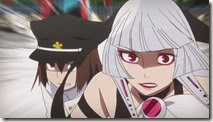 |
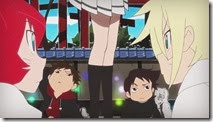 |
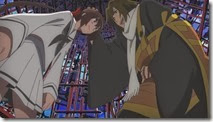 |
Kyousougiga is many things, but I’ve come to think of it as a sort of symphony in anime form.
I’ve referred in the past to something Salieri famously said of Mozart (supposedly) – that he wrote all of his pieces completely in his head, as if he were “taking dictation from God”. I’ve applied it to my impressions of Togashi and Hunter X Hunter, but it fits Kyousougiga like a glove, too. It gives the same impression of a series that depicts a mythology that existed in complete form, staggeringly complex, before the first episode (or chapter) was even written down.
The obvious influences on Kyousougiga are seemingly endless – Alice in Wonderland, Buddhism, the Hachiko story, Gainax (especially FLCL), the Choujuu-giga. And there are just as many metaphors to describe the series itself – I’ve compared to a jigsaw puzzle among other things – but for all it’s parallel narratives, I think structurally speaking it most closely resembles a symphony or concerto in the classic three-movement style. We started out with a frenetic Allegro, as the strangeness of this universe was shown through the eyes of its characters. The middle episodes were the Adagio, where the pasts of the characters were explored in a more reflective style, and the series seemed subsumed with the longing and heartbreak of those characters. Finally we’re now in the Allegro assai – where all of the mistakes of the past have come home to roost, and the very foundations of the universe itself are put to the test.
What strikes me about this episode is that it was full of revelations that were (mostly) unexpected without being surprising – the kind of exposition that makes so much sense you wonder why it didn’t occur to you in the first place. I chalk that up to the solid construction of the mythology itself, which leaves little to chance. Koto as Inari and Lady Koto’s natural daughter is one such revelation – if indeed the truth is that simple. It would certainly explain how she’s fundamentally different from their other “children” and thus able to do the things she does. I don’t know whether Koto was “born” in the normal sense but she seems very much the product of Inari and Bunny-Koto’s union one way or the other – she’s certainly inherited something from each of them.
That’s really just the jumping-off point, though, and where things start to get really complicated. The arrival of the Head Priest (Yao Kazuki, the oddly-dressed seiyuu from travelogue episode 5.5) – the boss of Jinja – is where the trickle of exposition becomes a flood. Lady Koto is “no longer real” and cannot exist outside the Sanctuary, because Koto has inherited her powers. It also seems that Koto has inherited some of Inari’s powers, and he seems to be a physically smaller being as a result. The Head Priest refers to him as “not a person, but an observer” and in this context I take that to mean what we would think of as a God – which dovetails with the Head Priest’s comment that Koto is the result of the union “between a God and a Buddha”.
The essence of the situation seems to be this: Myoue-Inari created Mirror Kyoto because he found the world of Jinja cold and soulless, for all its majesty and power, and wanted something meaningful in his existence. Stories like this about in every mythology, pretty much, and there’s a certain symbolism here for the act of creating a new life. Essentially this new world is the “Thirteenth Parallel” according to Inari’s familiars (who finally get their own childlike human forms – it’s worth noting that seemingly all the familiars, even A and Um, can be compelled to do what Jinja demands of them), and Inari has been keeping it a secret from Jinja – and he hid it so well that no one found it for Centuries, until Koko’s hammer opened the door from the inside. After that happened, all bets were off. Inari did all this for love, in his capricious fashion, but it’s all led to the crisis situation as it exists now – with Mirror Kyoto crumbling fragment by fragment, Yase losing all her memories and the fabric of the entire Universe – the other “parallels” – also under threat.
This is a big, grand mythological epic – but as usually happens, the people inside it went and lived lives and developed feelings of their own. Now Mirror Kyoto exists as a real place, the “children” Inari created (and resurrected) are very real and everyone has a stake in what happens next. So it’s not so simple as the Head Priest makes it out to be in pronouncing that Mirror Kyoto must be erased for “closure”. Koto blames herself for all this – for her mother’s demise, for giving away the secret of Mirror Kyoto’s existence, and for its current state of decay. There’s a truly beautiful image of all the things that Koto blames herself for – all the present and future deaths and all the destruction – existing in a single tear she sheds over what she’s done. But the other Myoue steps in at last and appeals to Koto on harsh but irrefutable grounds – for all her self-pity, Koto’s parents are alive (after a fashion) and right in front of her. Everything Yakushimaru once held dear – including his own life – was snuffed out centuries earlier. Koto can either wallow in her own tears or do what she usually does, wreak havoc with the status quo. And it’s never really a mystery what she’s going to decide to do.
More so than in any anime for quite some time, I feel as if the conclusion of Kyousougiga is going to boil down to what it is that the characters want. For now it’s enough that Koto blackmails the Head Priest into helping find a way to save Mirror Kyoto instead of destroying it, but ultimately that’s in itself just a jumping off point. Kurama wants, presumably, to go “outside”. Yakushimaru wants to die. Yase wants to be with her mother – if she gets her memories back. But what do little Koto and her father want, when all is said and done? They both want to save Mirror Kyoto, and presumably he wants to save Lady Koto if he can. But what then? Does Koto truly consider A and Um family despite their obviously non-human nature, and would she still think of Mirror Kyoto as a home if “her” Myoue were no longer in it? It feels to me as Inari and Koto are going to have to make very difficult choices in the end, because it’s not going to be possible for everyone to have their contradictory wishes granted – certainly not excluding the two of them.
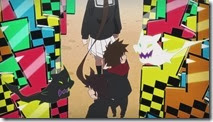 |
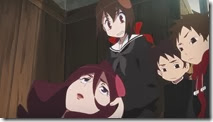 |
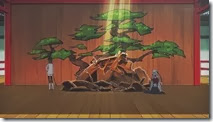 |
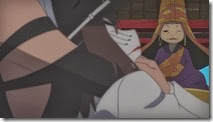 |
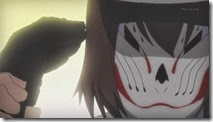 |
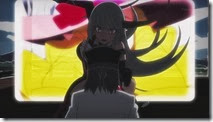 |
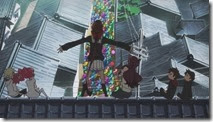 |
 |
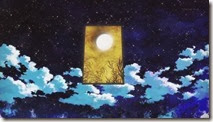 |
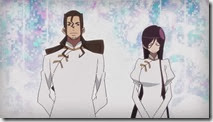 |
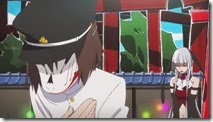 |
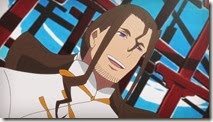 |
 |
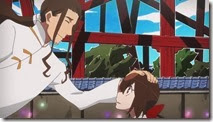 |
 |
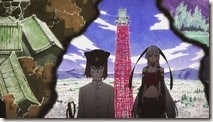 |
 |
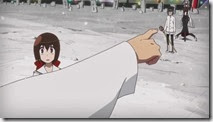 |
 |
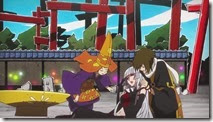 |
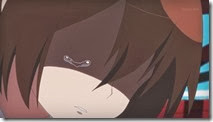 |
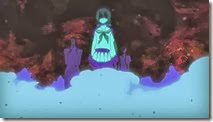 |
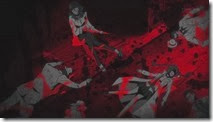 |
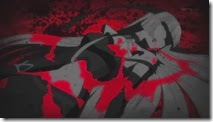 |
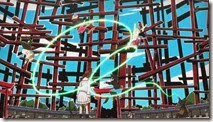 |
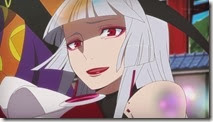 |
 |
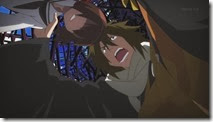 |
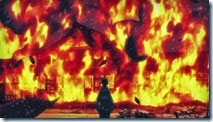 |
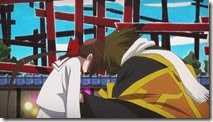 |
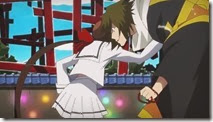 |
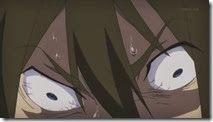 |
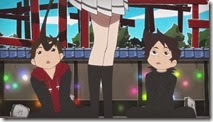 |
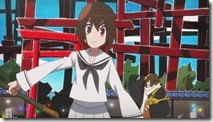 |
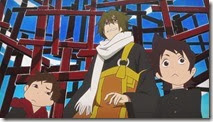 |
 |


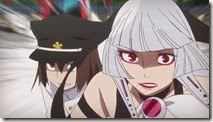
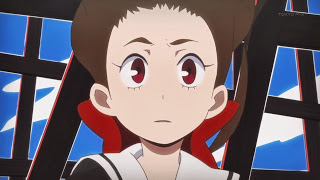
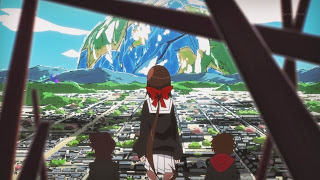
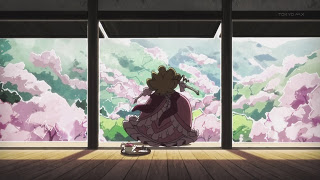

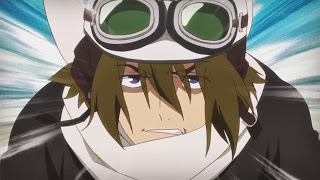
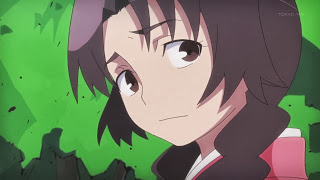
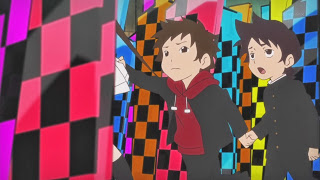


Dick McGuy
December 5, 2013 at 9:35 amI liked this show a lot more when it was a well written character study instead of an expository dump. I guess my honeymoon with Kyousougiga ended on episode 6 and I doubt it'll reach the lofty heights of the first 5 episodes again. It's still a good series, I believe, but that's mostly riding off the strength of the characters (who are slowly becoming erratic in their motives, sadly) and build up.
Maybe my opinion of the show can be rescued with how it all wraps up, who knows.
John Hunt
December 6, 2013 at 7:58 amI feel the same way, didn't really like this latest episode much. I feel it was at it's strongest with the story about the family and the individual siblings but hasn't been particularly strong since the episode where Lady Koto came back. It's still a good show, but I'm not really ready to declare it a masterpiece until I see what the heck's going on with this last little bit.
Alan Heung
December 5, 2013 at 10:24 amQuite liked all the sudden revelations and although the mood isn't as built up as the previous episodes, it's still a masterpiece. Episode 7 was the high point for me even though 5 and 6 were subtle yet beautiful pieces of their own. However, I'm pretty sure at this point, there would be no happy ending for this family. In the preview, it seems Inari was somewhat willing to follow the Shrine's orders by killing Koto. Is that his trade chip for Lady Koto's life? Or was that merely an activation of another sequence of chaos. Either way, this series has been great and probably greatest in the limited episodes this was illustrated in.
admin
December 5, 2013 at 11:28 amI didn't get the sense that Inari was willing to kill Koto – or, frankly, that Chief Priest was even necessarily advocating that himself. What was it that made you feel that was what was going on?
Kaname
December 5, 2013 at 12:56 pmI'm curious. Who did Myoe actually like? The black bra girl or the kimono girl?
TQ
admin
December 5, 2013 at 1:14 pmWho knows? I suspect that question will never be answered.
sonicsenryaku
December 6, 2013 at 12:51 amFrom what i can tell, Myoue loved the kimono girl, and to a certain degree, he still loves her, but when he grew up and he realized that she would continued to stay the same, the heart-breaking truth hit him that he couldnt be with her the way he wanted. Who knows, maybe Myoue has a thing for "black bra girl because maybe that's what he imagined the kimono girl might have looked like if she grew up a la Rahxephon (ill leave it at that in case there are still some people who have yet to watch that series).
Kaname
December 6, 2013 at 3:48 amI'm of the opinion that's he's just fooling around being a playboy and all.
TQ
admin
December 6, 2013 at 6:07 amMy take on it is that Myoue has never really come to terms with the fact that in his own mind, he's dead. So one way he deals with it is by being a tomcat, to more or less prove to himself that he's alive.
witchhuntress
December 5, 2013 at 11:18 pmI think it's about time things are explained. But unlike other stories, I feel that this episode was used well for explanation. It's a confrontation, and the Head Priest actually, supposedly held the reins. His character is used as it has always been–someone everyone reports to and someone who tells them what is wrong and what should not be.
There are quite a lot of symbolisms in this episode, and I especially like how the floor cracks establishes the two conflicting sides–Koto and her family (which we finally see united) and the Shrine people.
I've always thought Kurama would be the most likely character to look out for, but it seems like the Head Priest turned out to be something else. And now, as to Koto, I'm just glad that she challenged the Head Priest. She's always been a challenger, rebellious somehow, and I really liked the end of this ep.
Overall this ep seemed quiet. There wasn't the mellow song I liked to hear as in other episodes, but I like the quiet too.
Helen
December 6, 2013 at 6:39 pmCan't seem to reply to your reply to Alan so putting it here, in the preview for the next episode Inari certainly looks like a big bad and calls Koto something along the lines of "his other half" and mentions that her birth was unexpected, even though she may be the produce of a god and a buddha (and they more or less showed her as an infant here, they did in the ONAs and I wonder if that shot will get reused after all) I wonder if she was created through unconventional means after all (and I think your theory, that she took some of Inari's power and that's why he's smaller now, is probably right).
witchhuntress
December 7, 2013 at 12:47 amIt's really interesting to find that mystery out too. Like, that eclipse out thing is always shown, and it kind of makes me think of not only Lady Koto and Inari as yang and yin, but also as kid Koto being yang and Inari as somehow yin.
Just wild interpretations on the latter, but yeah.
R Lawlied
December 7, 2013 at 1:36 amI recall from Gingitsune, the term Jinja refers to Shinto shrine right? But the show itself seems to draw mainly from Buddhism. Shouldn't it be called Otera?
Helen
December 7, 2013 at 4:58 amI'd say it draws from both, they did say in this episode that Koto was the product of a god (kami) AND Buddha after all. Also, form what I've heard, the two mix surprisingly well in Japan with a number of people belonging to both religions.
admin
December 7, 2013 at 5:28 amYes on both counts. The two are very mixed in Japan, and Kyousogiga is loaded with symbolism from both belief systems.